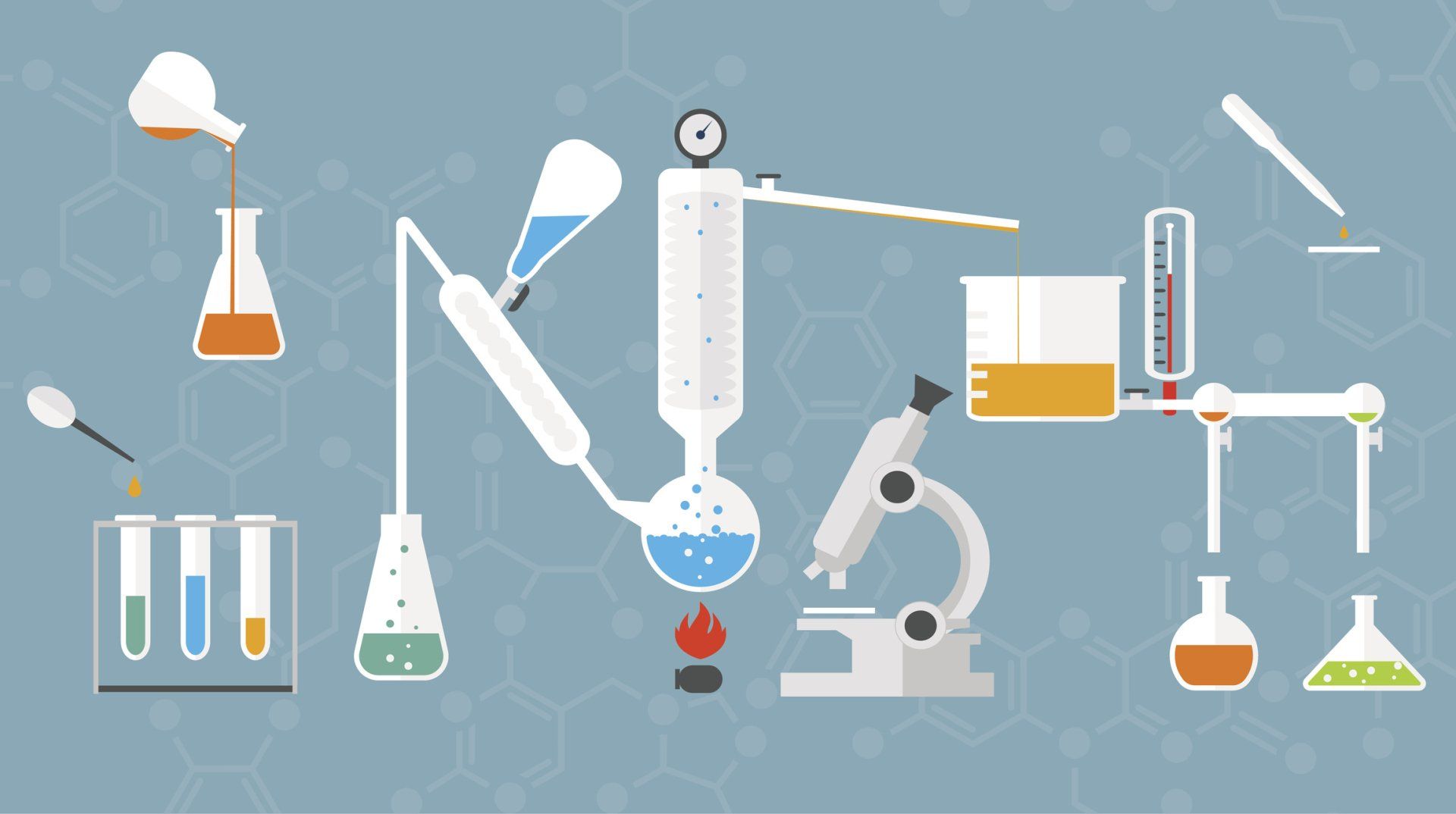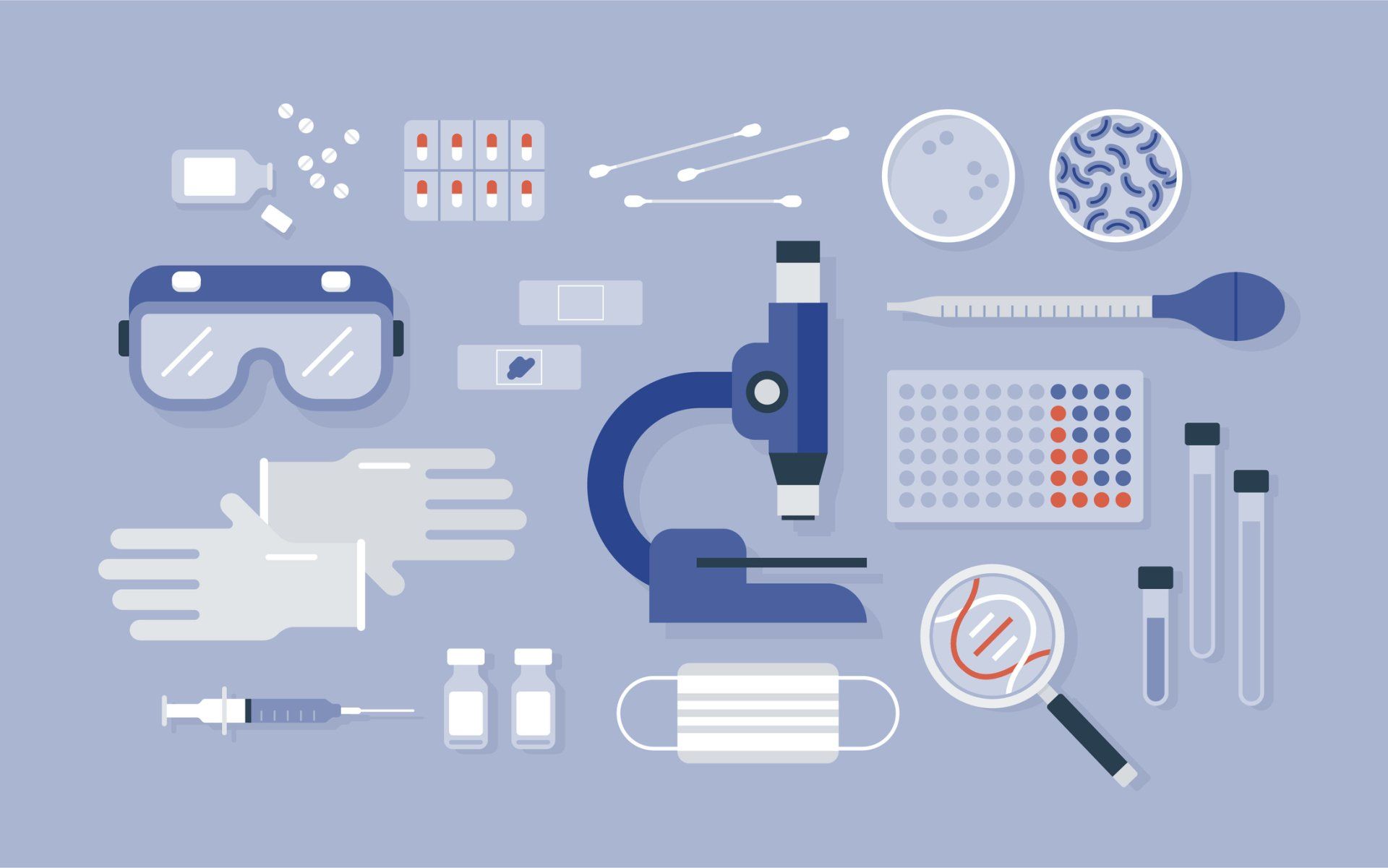From Cells to Spells (AACC)
A Brief History of HLA Testing in the Clinical Laboratory
Human leukocyte antigen (HLA) testing has been a staple of transplant medicine since the 1960s, when researchers discovered that crossmatches could reliably predict transplant allograft rejection (1). Although methods have changed dramatically since then, the premise that it is unethical to perform a transplant in the absence of HLA testing remains.
Interest in transplant immunology, specifically in the understanding of HLA and its implications for transplantation, has only increased over the past 60 years. Early on, the understanding was that the donor had to be a “match” for the recipient. While this concept is correct overall, in that the donor and recipient must be compatible, our understanding of what compatibility looks like has evolved considerably.
Let us take a brief tour of the history of HLA testing and its evolution from cells to spells.
MAKING A MATCH
From the late 1960s through the early 1980s, compatibility was determined by cytotoxicity dependent crossmatch (CDC). Donor serum was added to recipient cells, and if the cells remained viable, then the pair was considered compatible—a “match.” This method worked remarkably well, with transplant outcomes improving from ~35% mortality within the first year of transplant in the pre-crossmatch era (1963–1969) to <18% in the immediate years following implementation of the CDC (2). Notably, mortality within the first year post-transplant is ~5% today (3).
The basic premise of the CDC is that the presence of donor-specific anti-HLA antibody in the recipient serum induces complement fixation resulting in donor cell death (Figure 1). The production of HLA antibody in the context of a foreign graft relies on allorecognition. Various antigen-presenting cells present processed antigen to CD4+ T-cells that trigger an immune response. Upon T-cell activation, the CD4 helper T-cells release various cytokines that, in addition to activating CD8 killer T-cells, also activate progenitor B-cells that will begin to produce antigen-specific antibodies. In most cases this is a donor HLA peptide, leading to the production of donor-specific HLA antibodies.
Vascular endothelial cells are the preferential target of the immune response due to the abundance of antigens they express. When antibodies bind to antigens within the graft endothelium, complement molecules, particularly C1q, bind to the antigen-antibody complex and activate an intricate cascade of reactions. These result in the formation of the membrane attack complex (MAC) that disrupts the integrity of the cellular membrane resulting in cell lysis.
Cell death in situ in the CDC is certainly predictive of a poor outcome for the allograft in vivo, where activated complement can also be responsible for the recruitment of neutrophils, macrophages, and inflammatory markers that further damage surrounding tissue. This process results in inflammation, tissue injury, and thrombosis, leading to antibody mediated rejection and, ultimately, graft failure (4).
IMPROVING SENSITIVITY WITH FLOW CYTOMETRY
The CDC became the cornerstone of compatibility in transplantation. In the mid-1980s, however, a new flow cytometric crossmatch (FLXM) technique was developed that was found to be far more sensitive than the CDC (5). In this method, donor serum is still added to recipient cells, but now instead of adding exogenous complement to facilitate antibody-mediated cell death, an antihuman IgG antibody with a fluorescent tag is added. The mixture is then run through a flow cytometer, and increased fluorescence is indicative of incompatibility between donor and recipient (e.g., recipient has donor-specific HLA antibodies). The FLXM was more sensitive than the CDC; however, in 1999 an article was published highlighting the lack of specificity and questioning the clinical utility (6). At that time, an understanding was emerging that not all antibodies are created equal.
Until the lack of specificity of the FLXM was understood, the HLA was thought of as the only antigen on the cell surface. We now know that there are many antigens on the surface of a cell, all of which can bind antibodies of certain specificities (Figure 2). It is these other antigens that contribute to FLXMs that appear to be clinically irrelevant. These particular, non-HLA antibodies generally do not cause damage to the allograft, so a transplant between a donor and recipient that demonstrates a positive FLXM can still have outcomes identical to those of a pair with a negative FLXM. Therefore, it is critical to identify when a FLXM is positive due to HLA antibodies versus non-HLA antibodies.
SOLID PHASE TESTING ADDS SPECIFICITY
In the mid-1990s, researchers developed the solid phase testing methodology in which recombinant HLA antigens are conjugated to polystyrene microspheres (Figure 3). These beads can then be added to a patient’s serum, and any HLA antibody specific to the antigens represented will bind to the beads. A fluorescently labeled secondary anti-human IgG antibody can then be used to identify which beads—and therefore, which antigens—are positive (i.e., which specific HLA antibodies a patient has in circulation). Notably, upon the widespread utilization of solid phase testing, it was possible to distinguish exactly which HLA a recipient had antibody against at the antigen level.
In parallel to the development of solid phase testing, many laboratories began using molecular methods for HLA typing. These methods revealed that there was much more to HLA antigens than initially understood. Far more polymorphisms were discovered by molecular methods than had previously been distinguished by serological methods. For example, one of the first HLA antigens identified by serology was designated HLA-A2. However, when molecular methods entered, it was discovered that A2 had several polymorphisms that had not been serologically determined. Thus, these were designated as alleles of A2 (HLA-A*02:01, HLA-A*02:06, etc.).
The nomenclature went from a locus- (e.g., A) and antigen- (e.g., A2) based system to an allele-based system of locus (A), antigen (A*02), and allele represented by the four-digit designation (A*02:06). Notably, while >25,000 HLA alleles have been characterized, only the most frequently occurring 60 to 70 serologically determined HLA antigens are currently identified by solid phase testing.
THE ERA OF VIRTUAL CROSSMATCH
As a complement to the great specificity of the solid phase HLA antibody testing and molecular typing methods, the mid-2000s ushered in the era of the virtual crossmatch (VXM). By knowing the specific HLA antibodies in the circulation of the recipient and the HLA genotype of the donor, the compatibility of the pair could easily be predicted. It was found that the VXM had better specificity than the FLXM and that outcomes of transplants that proceeded based on VXM had equally good outcomes (7).
Currently, as we begin the 2020s, the assessment of donor/recipient compatibility relies on VXM-acceptable mismatch strategies, with positive VXM/unacceptable mismatches defined by the presence of donor-specific HLA antibodies targeting the HLA antigens of the donor as determined by the HLA genotype. It is important to remember, however, that a negative VXM—indicating a compatible donor/recipient pair—does not mean that the pair is HLA matched. In fact, it has been demonstrated that increasing the HLA mismatch results in development of de novo donor-specific HLA antibodies (DSA) post-transplant. These are correlated with antibody mediated rejection and worse outcomes (8).
For this reason, the VXM/acceptable mismatch approach to deceased donor kidney allocation has been challenged by proponents of HLA epitope matching algorithms that claim to offer a more precise assessment of compatibility.
UNDERSTANDING EPITOPES
To date, HLA has been primarily thought of as a group of antigens. However, as understanding of antigen/antibody interactions has progressed, HLA perhaps should be recognized as a grouping of epitopes. An epitope is defined as the region of an antigen to which an antibody binds (Figure 3). Each antigen can have multiple epitopes; conversely, a single epitope may be present on multiple antigens.
Each individually identified HLA antigen will carry a “private” epitope. This is the single nucleotide polymorphism, resulting in a single amino acid change, that will distinguish the allele from others of the same serological group. However, cross reactive groups (CREGs)—where several antigens will react serologically with a single serum—have long been recognized among HLA antigens. Understanding the presence of epitopes has now revealed that many of these CREGs represent a single epitope binding to a single antibody. It is now easier to think of an HLA antigen as a collection of epitopes, all of which are shared with other HLA antigens. Under this framework, it has become clear that “matching” donors and recipients at the antigen level is insufficient.
The concept of epitopes within the field of transplant immunology was brought to the forefront by the work of Rene Duquesnoy (9). However, for many years the field was skeptical of this new point of view. It wasn’t until almost a decade later, when epitopes were proven to be predictable based on the structural, physiochemical properties of the amino acid polymorphisms, that the epitope-based theory of HLA became widely accepted (10). Not long after, several software algorithms were developed to help better understand the level of epitope matching, or mismatching, between donor/recipient pairs. The first was HLA Matchmaker by Duquesnoy (9) which was soon translated to the Epitope Registry (11).
Development of de novo DSA post-transplant correlates with the level of epitope mismatch between the donor and recipient, also known as epitope load (12). However, HLA Matchmaker and the Epitope Registry only account for the antigenicity of the epitope—how the epitope interacts with an antibody. In the context of de novo DSA, it is also critical to consider the immunogenicity of the epitope or its ability to induce an antibody response (12).
In a 2011 publication, Kosmoliaptsis et al. reported that the physicochemical polymorphisms of amino acids, such as hydrophobicity and electrostatic properties, were also predictors of an alloantibody response (10). They found that the HLA amino acid mismatch score (AMS) and electrostatic mismatch score (EMS) were associated with the development of DSA against donor HLA Class II mismatches after renal transplant, but only the EMS correlated with the risk of HLA Class I DSA development. These data indicate that differences between donor and recipient HLA amino-acid sequences—as well as the physicochemical properties of the epitope mismatches—enable better assessment of the risk of de novo DSA development and subsequent graft failure than conventional HLA matching.
TIME TO REDEFINE DONOR/RECIPIENT COMPATIBILITY?
The impact of epitope load on DSA formation and graft survival has led to the suggestion that compatibility of donor/recipient pairs be redefined as epitope matching or the level of epitope load. Indeed, there may be several advantages to this approach. Firstly, it may allow increased access to transplantation for highly sensitized individuals—those with high levels of pre-existing anti-HLA antibodies. Determining compatibility based on the epitope load would, theoretically, allow for organ allocation to highly sensitized patients despite presence of pre-exiting DSA. The donor epitope repertoire would be considered for compatibility, rather than simply the mismatched antigens. This would potentially allow for more acceptable allele combinations, thereby expanding the donor pool (13).
Epitope considerations may also be beneficial for recipients who are less sensitized. Perfect donor/recipient HLA allele matching is clinically impractical in the context of over 25,000 HLA alleles across 11 HLA gene loci. In contrast, with a smaller number of epitopes that may be shared across different HLA alleles, accomplishing compatibility at the level of the epitope may be more feasible (14). However, the overall feasibility of determining compatibility based on epitope load still faces many challenges.
The first step toward implementing epitope matching relies on the availability of allele-level HLA genotyping. Genotyping of a deceased donor is highly time sensitive, and for this reason, laboratories choose their methods primarily for a rapid turnaround time and offer only intermediate level typing at best. That is, these methods often cannot resolve between common alleles.
At times, the allele-level typing is imputed based on associations between alleles at other loci that are well documented in large populations. However, recent studies have shown that imputations are often inaccurate, and the inaccuracies are more pronounced when applied among patients of non-Caucasian self-reported ancestry (14). This limits the accurate assignment of epitopes in deceased donors as well as in recipients being typed by low resolution methods, which is still common at many centers.
The feasibility of epitope matching in the context of deceased-donor transplant is also limited by time. It is often necessary to utilize more than one software package to both identify the epitopes and then assign the epitope load of the donor. The laboratory must then cross-reference this information with the pre-formed DSA to completely rule out those epitopes, as well as determine the remaining epitopes of most concern to inform acceptable mismatching—a time-consuming endeavor. Moreover, while increased donor epitope load has been correlated with worsened outcomes, not all epitopes have thus far been shown to be deleterious. That is, the antigenicity of some identified epitopes is still in question; antibodies are likely to bind strongly to some epitopes and only very weakly to others. Understanding which epitopes are which is going to be critical to an acceptable mismatching strategy.
Finally, while efforts are underway to identify the most immunogenic epitopes, what has not been considered is the risk of allograft injury associated with re-exposure to epitopes, which may accelerate immune response and injury (14). Patient sensitization after prior transplant, transfusions, pregnancies, etc. is difficult to account for, and it is possible that recipients may experience a strong memory response to highly immunogenic donor epitopes even in the absence of detectable existing DSA. It is equally likely that a recipient may have no response to previously encountered epitopes that are not very immunogenic.
Our understanding of transplant immunology has evolved tremendously from the days of the CDC into the current epitope era. The concept of compatibility itself has evolved from relatively simple in terms of “matching” at the cell level to something incredibly complex in the context of epitopes and acceptable mismatching.
As we consider the current obstacles to allocating organs based on epitope load, it may seem akin to casting a magic spell. However, in the 1960s, predicting transplant outcome based on mixing serum and cells seemed like magic as well. There is only a thin line of understanding between magic and science, and as the field of transplantation develops a laser focus on improving long term outcomes, it is only a matter of time before our understanding evolves again.
Tiffany Bratton, PhD, DABCC, FAACC, FACHI, is the director of laboratory services at Clinical Trial and Consulting Services in Covington, Kentucky. +Email: tkroberts56@outlook.com
HLA AND COVID-19
A January 2022, advance online publication titled ‘Association of HLA gene polymorphism with susceptibility, severity, and mortality of COVID-19: A systematic review’ evaluates the extent to which HLA may contribute to COVID-19 susceptibility, severity, and mortality. The review is a meta-analysis of 36 published articles (HLA 2022; doi: doi.org/10.1111/tan.14560).
HLA contributes to the outcomes of several infectious diseases and can cause variation in vaccine immune responses. Researchers worldwide have found significant associations among HLA alleles and severity of SARS-CoV-2 infection. The presence of certain HLA alleles may aggravate COVID-19 disease outcome while others have a protective effect. However, studies are limited by heterogeneity in study populations and methods, yielding inconsistent results.
Upon infection, SARS-CoV-2 peptides are presented to T-Cells by antigen presenting cells (APCs). Some peptides, which are carried by specific HLA antigens, may be better presented than others resulting in more robust immune responses. By identifying these “protective” HLA alleles, it may be possible to incorporate them into epitope-based vaccine design, allowing for an immunization response that mimics naturally mounted resistance.
Conversely, an exaggerated immune response is one of the indicators of poor prognosis and long-term effects of COVID-19. Because the immune response varies from person to person, it is crucial to curate a more thorough understanding of the involvement of HLA in the immune response to SARS-CoV-2 infection.
REFERENCES
1. Patel R and Terasaki PI. Significance of the positive crossmatch test in kidney transplantation. N Engl J Med 1969; 280:735-739.
2. Stenzel KH, Whitsell JC, Stubenbord WT, et al. Kidney transplantation: Improvement in patient and graft survival. Ann Surg 1974;180(1):29-34.
3. Hart A, Lentine KL, Smith JM, et al. OPTN/SRTR 2019 Annual Data Report: Kidney. Am J Transplant 2021; 21 Suppl 2: 21–137.
4. Colvin RB, Smith RN. Antibody-mediated organ-allograft rejection. Nat Rev Immunol 2005;5:807-17.
5. Bray RA, Lebeck LK, Gebel HM. The flow cytometric crossmatch. Dual-color analysis of T cell and B cell reactivities. Transplantation 1989;48:834-840.
6. Kerman RH, Susskind B, Buyse I, et al. Flow cytometry-detected IgG is not a contraindication to renal transplantation: IgM may be beneficial to outcome. Transplantation 1999;68:1855–1858.
7. Roll GR, Webber AB, Gae DH, et al. A virtual crossmatch-based strategy facilitates sharing of deceased donor kidneys for highly sensitized recipients. Transplantation 2020;104:1239-1245.
8. Lim WH, Chadban SJ, Clayton P, et al. Human leukocyte antigen mismatches associated with increased risk of rejection, graft failure, and death independent of initial immunosuppression in renal transplant recipients. Clinical Transplantation 2012;26:E428–E437.
9. Duquesnoy RJ. HLAMatchmaker: a molecularly based algorithm for histocompatibility determination. I. Description of the algorithm. Hum Immunol 2002;63:339-52.
10.Kosmoliaptsis V, Sharples LD, Chaudhry AN, et al. Predicting HLA class II alloantigen immunogenicity from the number and physiochemical properties of amino acid polymorphisms. Transplantation 2011; 91:183-90.
11.HLA Epitope Registry. http://www.epregistry.com.br/ (Accessed February 5, 2022).
12.Kumru Sahin G, Unterrainer C, and Süsal C. Critical evaluation of a possible role of HLA epitope matching in kidney transplantation. Transplant Rev (Orlando) 2020;34:100533.
13.Duquesnoy RJ, Howe J, and Takemoto S. HLAmatchmaker: a molecularly based algorithm for histocompatibility determination. IV. An alternative strategy to increase the number of compatible donors for highly sensitized patients. Transplantation 200327;75:889-97.
14.Lemieux W, Mohammadhassanzadeh H, Klement W, et al. Matchmaker, matchmaker make me a match: Opportunities and challenges in optimizing compatibility of HLA eplets in transplantation. Int J Immunogenet 2021;48:135-144.
15. Deb, P., Zannat, K. E., Talukder, S., Bhuiyan, A. H., Jilani, M., & Saif-Ur-Rahman, K. M. (2022). Association of HLA gene polymorphism with susceptibility, severity, and mortality of COVID-19: A systematic review. HLA, 10.1111/tan.14560. Advance online publication. https://doi.org/10.1111/tan.14560






